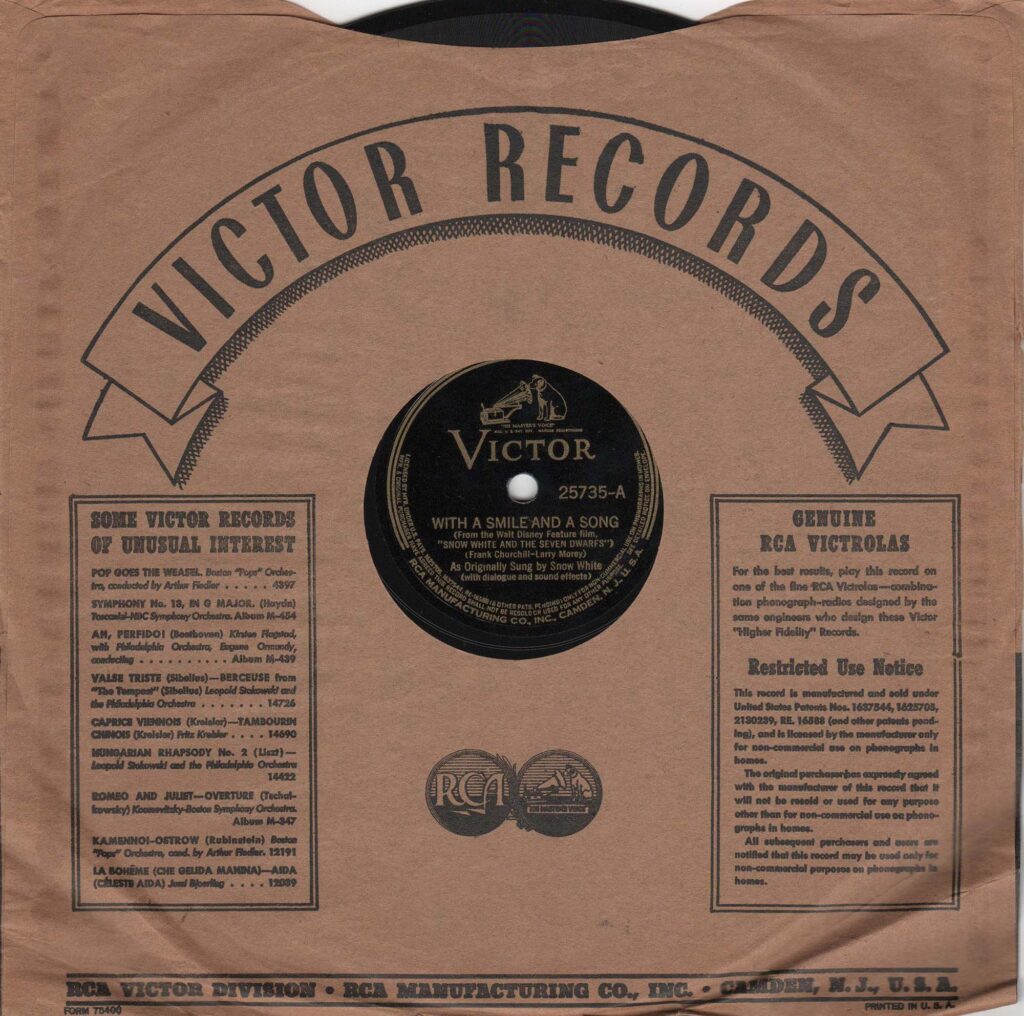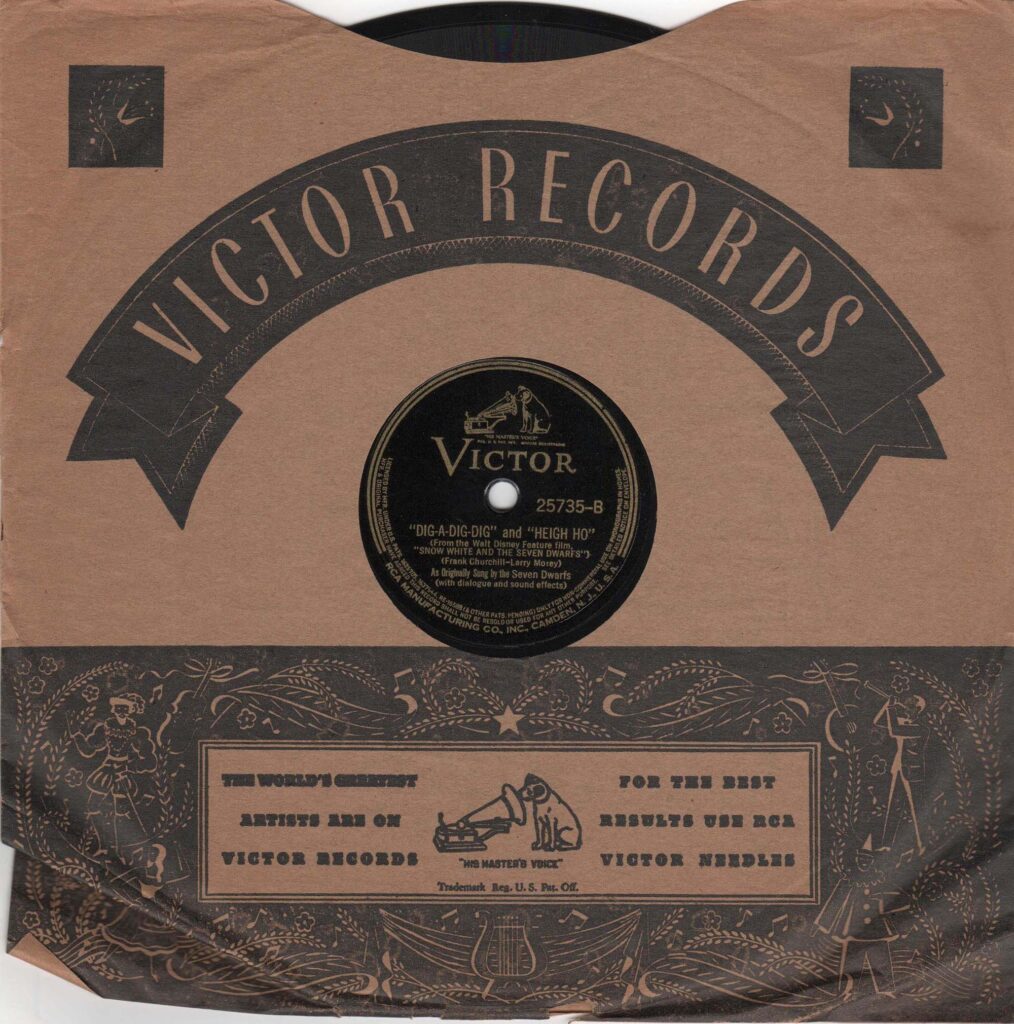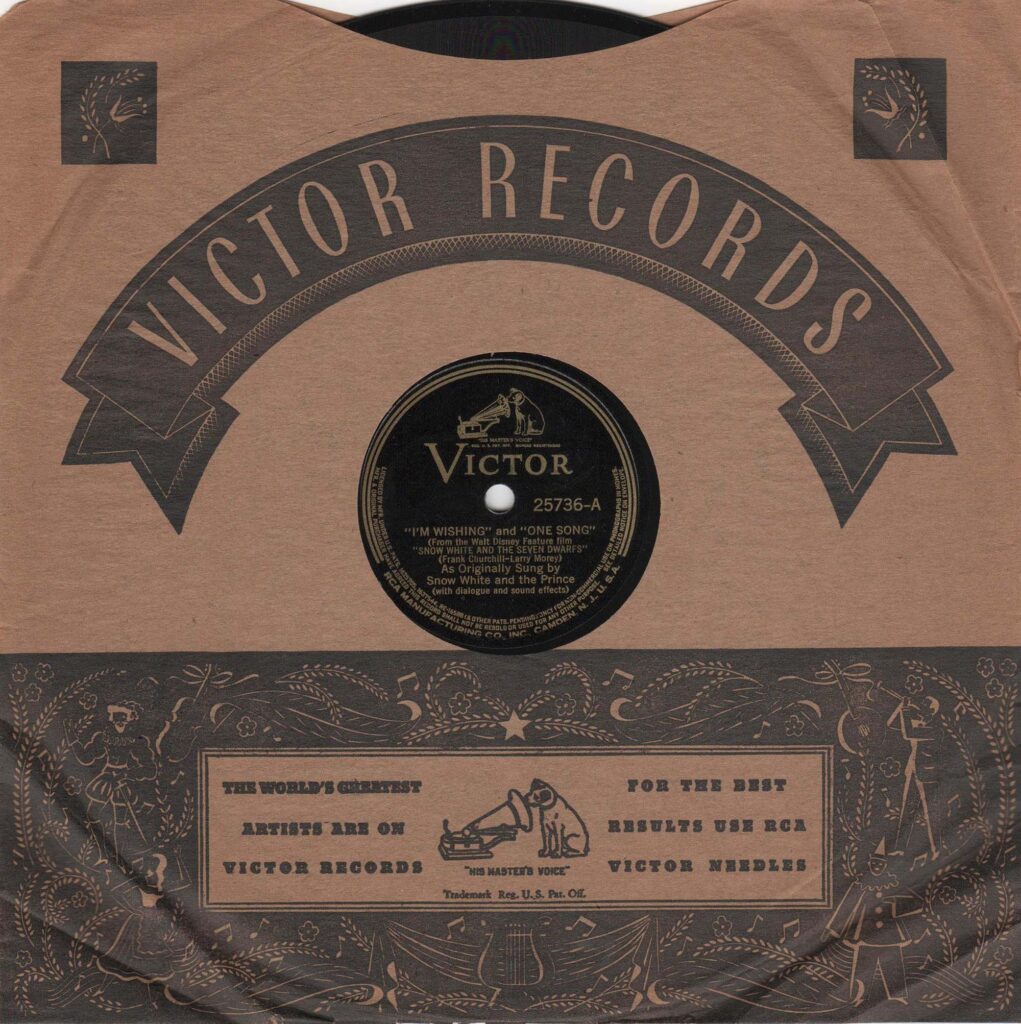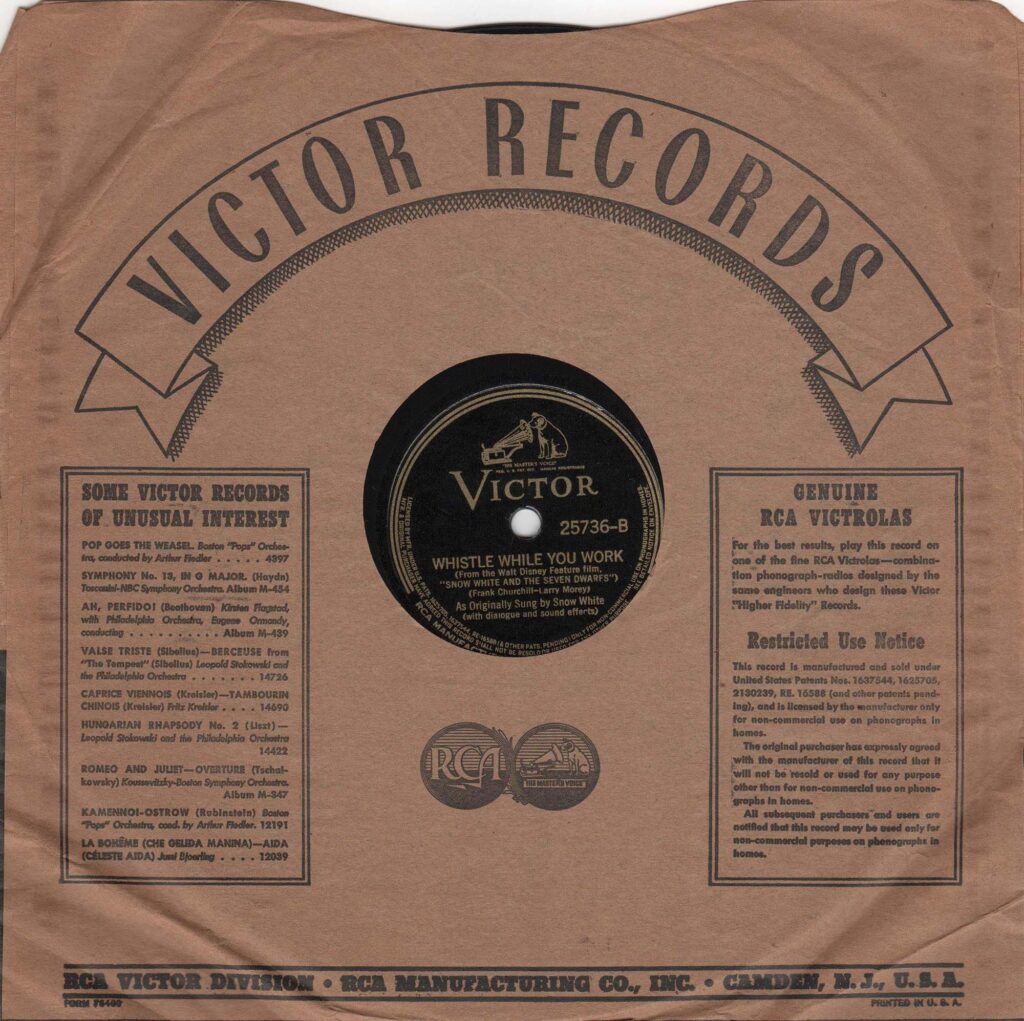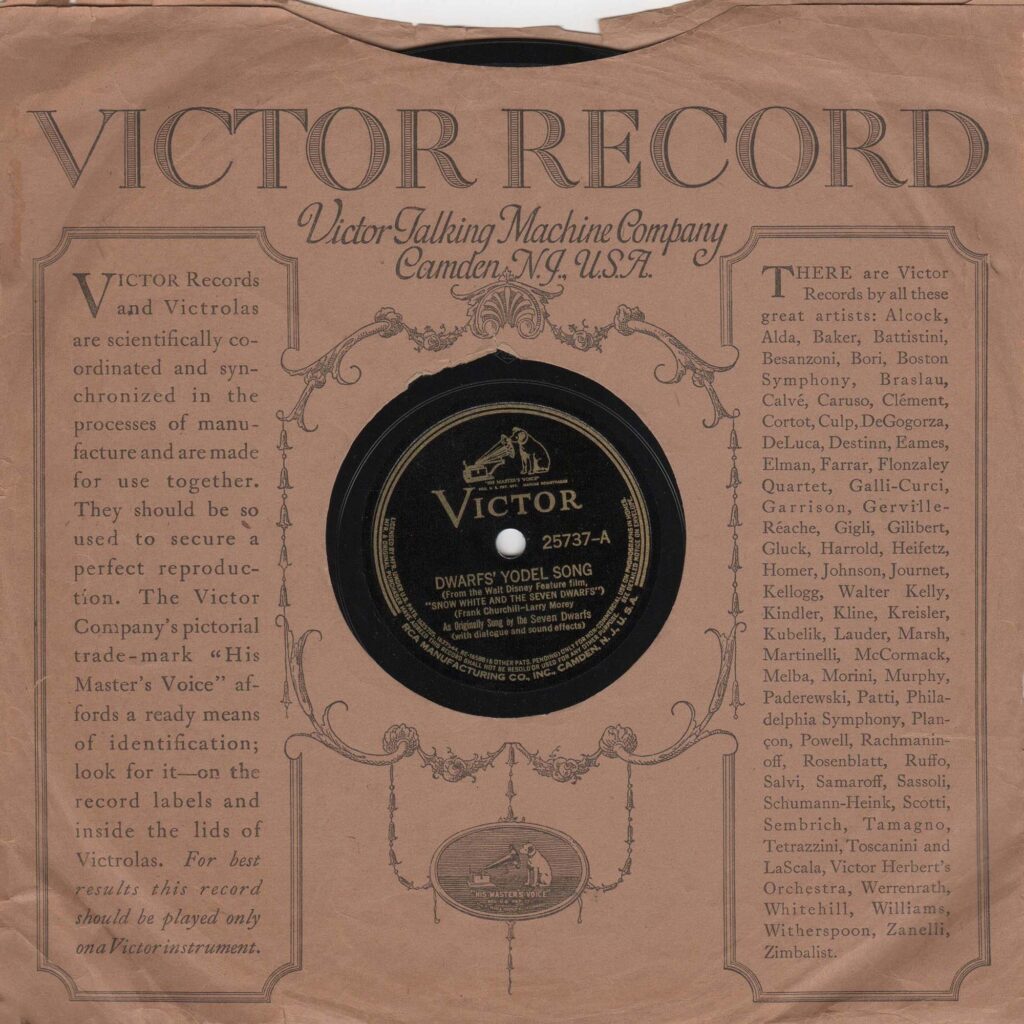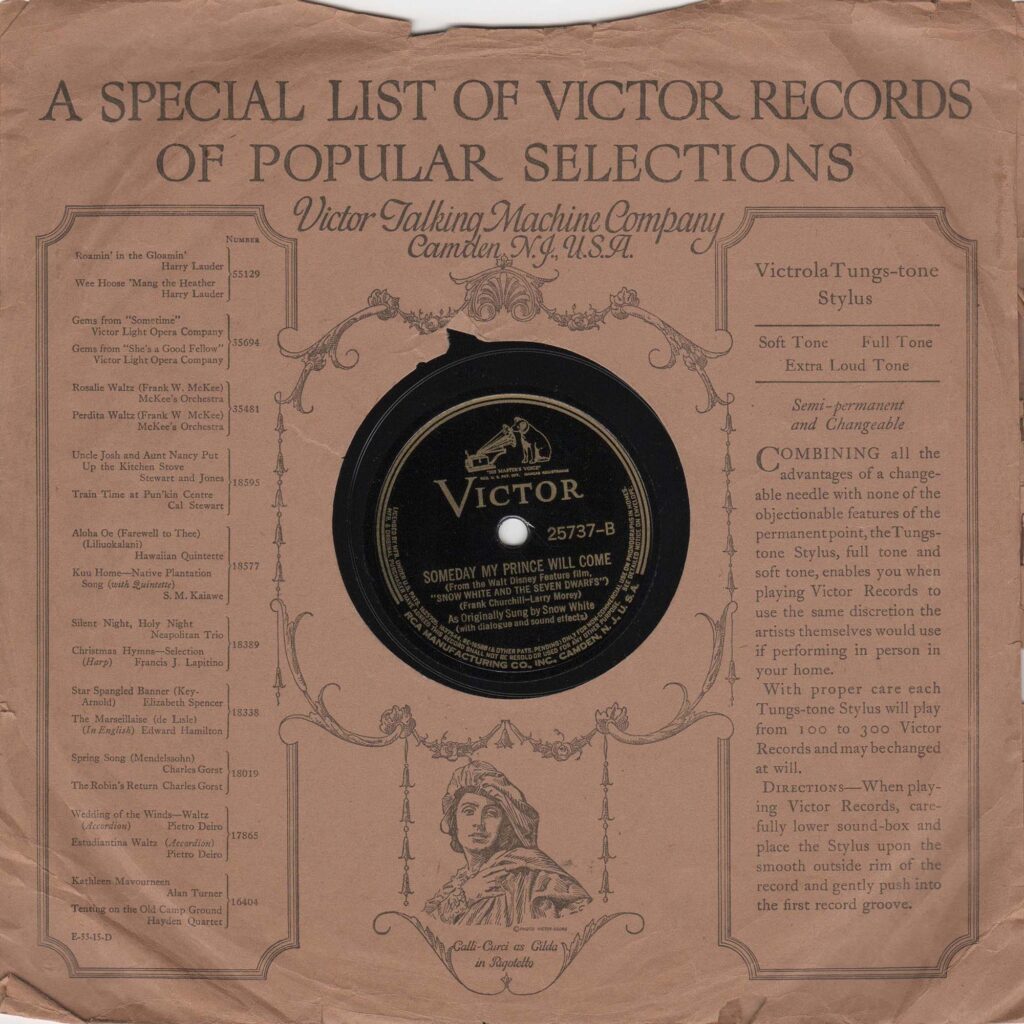Production information
Record production number: J-8
Release date: 1938
Produced by Victor Records
Composed by Frank Churchill, Leigh Harline, Larry Morey, and Paul J. Smith
Back to American Records

It’s a relatively well-known fact that Snow White and the Seven Dwarfs was the first feature film to have its soundtrack commercially released on disc. As a matter of fact, the first non animated film musical soundtrack was released 10 years later with MGM’s Till the Clouds Roll By. But what was the custom before that? Discs were released (in the 78-rpm era), but they were invariably re-recorded versions made especially for the disc in question. The most popular performers of the day could each offer their own version of the latest song. Snow White was no exception in this respect. On the other hand, and this was a new development, from January 1938 onwards, the public could find on three discs extracts of the soundtrack as they had heard it in the cinema, apart from a few details.
The genesis of special discs
As the film’s release approached, Walt Disney needed to find the funds to finish production. He is approached by Saul Bourne, with whom he is already dealing for the Silly Symphonies, to buy the rights to the music for Snow White. Bourne made a deal with Irving Berlin, who took care of releasing the numerous scores on sheet music, and with RCA, who released around 20 minutes of the music on Victor Records. This agreement was only the beginning of a long legal battle for Disney, which would never again own the rights to the music for its first feature film. He was allowed to release and re-release the film, but Bourne and his heirs retained control of the music to this day. On December 7, 1937, RCA signed a contract to release records of the two versions already recorded and available: the English-language version, and the Spanish-language version. No other version was released until the 1980s.
The cover
The three heavy 78 rpm discs, made of shellac at the time, are packaged in a cardboard sleeve that mentions the release reference, J-8 (the J stands for Juvenile or Junior), and makes it clear to potential buyers that these are the “songs from Walt Disney’s Snow White and the Seven Dwarfs, with the same characters and sound effects as in the film of that title”.
The single central illustration does not, as might have been expected, feature the title role, but the seven dwarfs returning from the mine, who cross a ravine with the help of a tree trunk. This illustration was created by Gustaf Tenggren to inspire the animators and is used here for promotional purposes.
While the whole may appear rather simple in appearance and sometimes pale in comparison with later or foreign releases, it should be remembered that most records of the period were sold without even a personalized sleeve. The mere existence of a sleeve for this release is an event in itself.
The discs
Each record comes in an individual publisher’s sleeve, which may vary from one copy to another, as these are only RCA promotions or their other records. Incidentally, each disc could be sold separately too, but a period advertisement shows the lot at $2.25, and it seems that in 1940, the lot was sold for $1.50. The songs are broken down as follows:
- 25735-A With a Smile and a Song
- 25735-B Dig Dig and Heigh-Ho
- 25736-A I’m Wishing and One Song
- 25736-B Whistle While You Work
- 25737-A Dwarf’s Yodel Song
- 25737-B Some Day My Prince Will Come
The songs came very close to being in the order of the film, but they seem to have been split up to offer a ballad and a more rhythmic song on each disc.
Are the recordings really from the film? Considering when the masters were given to RCA to manufacture the discs, it’s likely that they are. But if we compare them with the final cut on release, we find a few differences, probably due to last-minute decisions.
In Heigh Ho, for example, a whistled passage between the moment when Dopey hangs the mine key on the wall and when the dwarfs walk in single file seems to have been cut. This brief moment is repeated when the dwarfs push a wagon later in the film, although the song is interrupted by the arrival of the animals. If you’d like to see the animation that was intended to accompany this cut piece of music, I suggest you watch the short film Standard Parade for 1939, where the animation was reused.
In One Song, at the end of the piece, we don’t hear the sound the bird makes when it blushes. This is a detail, but its interest lies in the fact that it seems that the studios did not keep this original mix without the sound effect, as it appears in all recent discs, including those that attempt to present only the music without the sound effects.
Finally, in the Dwarf’s Yodel Song, Sneezy sings a verse that doesn’t appear in the film, between Happy and Bashful. In it, he talks about using his moustache as a diaper, which may explain the omission. There are also differences in the way the voices are mixed during the chorus, which may explain certain shots where the dwarfs move their lips but we don’t hear them sing.
The discs were distributed worldwide (in English) and soon afterwards re-released several times with different sleeves in the U.S., then in CD format in 1988, but with the same recording.

